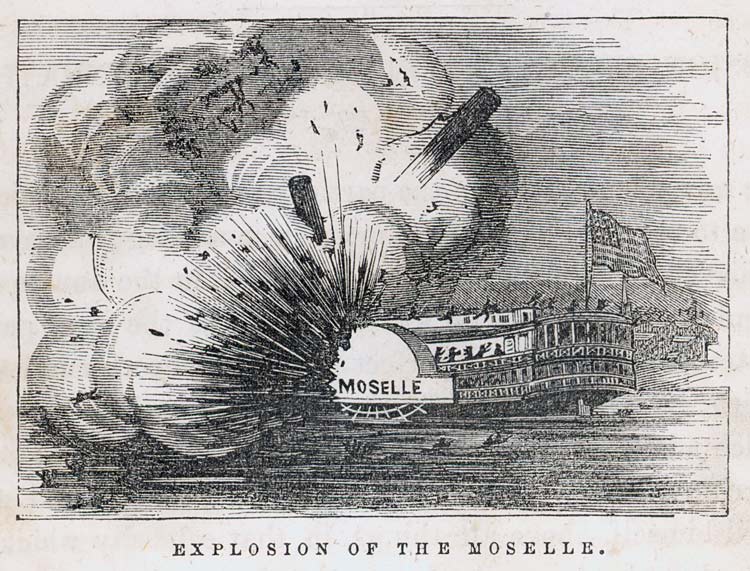In an act approved on February 23, 1837, the legislature addressed the issue of steamboat safety. The act "to protect lives and property on board Steam Boats" covered a range of safety issues, beginning with the requirement that all steamboats "have a competent master, officers, and crew on board." Boats had to have adequate safety equipment, and the crews were obligated to strictly abide by traffic regulations for ascending and descending vessels. The storage of gunpowder and other combustible materials was strictly regulated. The act also made it illegal for "Steam Boats to run races against each other." Owners and officers were held liable for all injuries sustained by passengers during races and, indeed, for all injuries suffered by neglect of all other safety regulations. Failure to post copies of this act "publicly placed in the cabins of each steam boat" was punishable by a fine of one hundred dollars "for each week the same shall be omitted."

Illustration of the "Explosion of the Moselle" from Lloyd's Steamboat Directory, and Disasters on the Western Waters . . . James T. Lloyd, 1856. On the afternoon of April 25, 1838, the steamboat Moselle left the landing at Cincinnati, bound for St. Louis. According to some accounts, 300 passengers were on board, many of which were German immigrants. This unsafe number, coupled with the "injudicious management of the steam apparatus," caused an explosion "like that of a mine of gunpowder," and a disaster that "was unprecedented in the history of steam" occurred. Kentucky Historical Society Collections.
